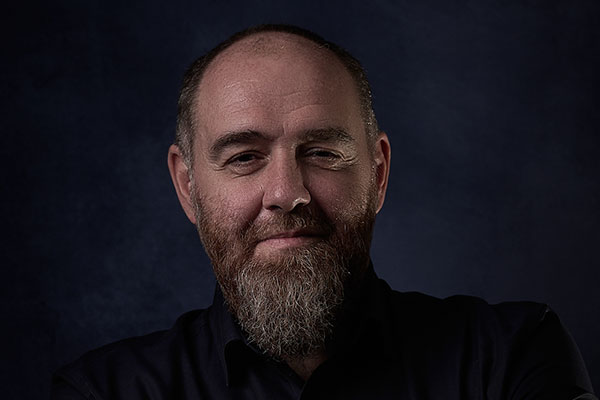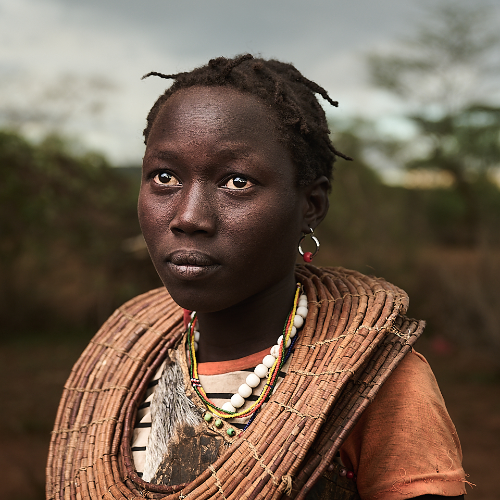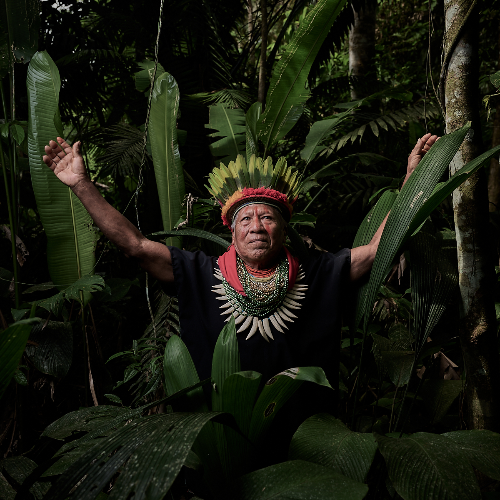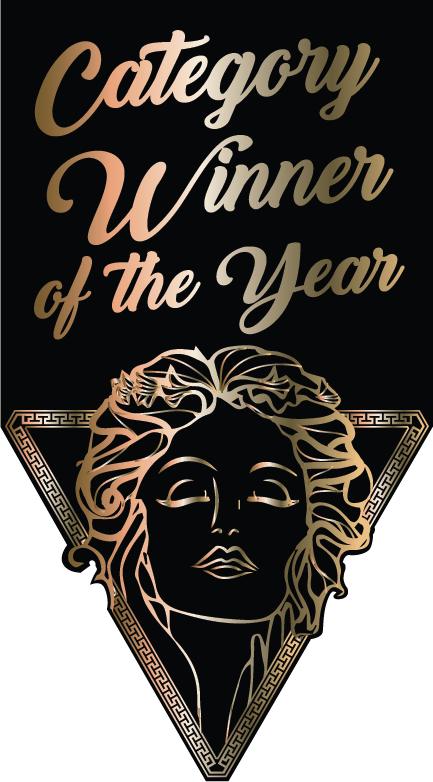
Interview
Marios Forsos
Marios Forsos Photography, United Kingdom
Storytelling has always fascinated Marios Forsos, who sees it as a thread linking people and moments. When words failed, photography became his tool to capture stories through light, color, and collaboration.
1 Congratulations on winning in the MUSE Photography Awards! Can you share a little about yourself, what inspired you to pursue photography, and how has your journey evolved since your first shot?
I have always loved telling stories—I love how stories connect both the people who share them and the audience, and how our collective global psyche is shaped, moment by moment, by stories and the storytellers who share them. Yet I often ran out of the right words, so when I discovered photography, I felt I had finally found a way to share the many stories I encounter around the world in a way that remains personal to me—by crafting images with my subjects, sculpting every single aspect using light and the myriad of colors it creates. Ultimately, these are their stories, and I’m just an incredibly lucky storyteller.
2 Can you share the story or inspiration behind your award-winning piece? How does winning this award make you feel about your journey in photography?
I think it was the story of the young girl in the cover photo of this story. Born 15 years ago, as she grew up, moving with the flock was all she knew, and she was proud to uphold the traditions of her tribe. But in the last eight years, she moved closer to a small town, started meeting people outside her village, got a cheap mobile phone, and saw movies on TV. When I visited, the elders in her village had decided to return to a fully nomadic lifestyle, and the small village was facing a deep divide, with emotions ranging from happiness to anger, uncertainty, and fear—but on no face other than hers did all these emotions mix and merge. Before my lens, she transformed into a near-perfect visage of uncertainty and underlying hope, and I feel that capturing this was an enormous honor. If anything, this experience reminded me of something I always felt but could never put into words until I read the following by A.J. Compton: “Adequate photographers use their sight, good photographers use their senses, but great photographers use their souls.” So, I guess moving forward, I’ll need to make sure that before I look for the light, before I even pick up the camera and think about a frame, I look through my soul—and hope that when I press that shutter, it is the soul of my subjects that guides everything I do. I hope I can do them justice.
3 How do you decide which photo to submit for a competition?
The easy answer? I guess I look for images that, through two of the most powerful tools in our physical universe—light and shadow—convey some of the stories I see unfolding before me every time. The more complex answer? Before I even visit a location, I research the stories I want to tell extensively—sometimes for months—and I pre-visualize hundreds of different approaches, ideas, frames, lighting scenarios, and much more. I don’t do this to make my life easier; I do it to ensure that when I set foot on the ground, I can focus on the people and not worry about technique or lighting options—because all those things have already been worked out in my head beforehand. It is during this phase of research and previsualization that the story’s layout is shaped in my mind, so when the time comes to submit the story, the images pretty much present themselves.
4 What first made you pick up a camera?
Until I was 14, I loved drawing and sketching—trying different techniques, experimenting with watercolors and charcoal, filling one notebook after another with countless failed attempts to capture what my eyes could see. Let me tell you, the frustration is very real; it’s almost scary at that age. Then, for Christmas, my uncle bought me a Time Life book on photography—a huge, heavy tome introducing people to the world and art of photography—and let me tell you, my life was transformed. I went through the 300-page book in a single weekend, and when my parents asked me what I wanted for Christmas, I naturally asked for a camera. This was when I held, for the first time, a used Minolta XG-9 with a 50mm f/1.8 lens, fitted with a 36-frame ISO 200 Kodak film. Looking through that viewfinder, I realized I could capture what I had always wanted. Of course, out of those initial 36 frames, 34 were blurry garbage, but two were a hundred times better than anything I could have ever hoped to sketch—it was those two shots that changed my life.
5 What’s your favorite type of photography, and why do you love it?
I would say environmental portraits, which tell a story. I know this is not a usual type (or category, if you like), but it’s one I feel has a place everywhere—from the marshes of Iraq to the jungles of Ecuador, and from the French countryside to the chaotic metropolis that is New York City. It’s about letting your subject and their environment naturally settle and present you with their story. All you need to do is add a little light here, drop a little shadow there, move a bit to the left or right, and capture an image that tells that story. I guess this is why I love it—it’s not a portrait isolated in unnatural darkness or set against a sea of bokeh blurriness where you just see the person; it’s so much more.
6 What’s your go-to camera setup, and why does it work best for your projects? What’s your favorite feature?
Even though I travel with three camera bodies, 4–5 lenses, and an assortment of other gadgets and tools, 80% of my shots nowadays are taken with a Z9 and my 24-70mm f/2.8 S lens, my Godox AD1200Pro strobe—usually shot through either a 120cm or an 80cm octabox—and a 2–32 stop VND. The remaining 15% are shot with my 85mm f/1.2, and 5% with my 14-24mm f/2.8. This simple gear allows me to capture what I want almost entirely in-camera—less than 5% of my shots require more than basic curves and saturation adjustments in post. I shoot almost exclusively in Manual mode because it lets me control every aspect of the shot. But if there were one “feature” I would miss if it vanished, it would be my VND. This incredibly versatile little disc allows me to manage ambient light while shooting at really wide-open apertures, enabling me to shoot even against the midday sun and still use my light to craft beautiful images.
7 If someone looked at your work, what’s the one thing you’d want them to feel?
I would hope it would be a connection with my subjects—a sense of the belief in the divine that the shaman feels when he prays to the sun, the pride the Nenets herder feels as he stands proudly next to his reindeer, and the strength combined with isolation the Ma’dan wife feels as she stands alone against the setting sun of the Mesopotamian marshes. I don’t want to restrict my audience in what they take from my images—I want those images to stand on their own and allow different eyes to take whatever they find in them.
8 What was the most challenging part of capturing your winning shot?
Challenging? Oh, that’s easy: I prepped for this story for six months, working with my local fixer to locate the various communities and tell the story of a near-decade-long drought—capturing people against deserts and desolation, a vastly shrunk lake, and the carcasses of desiccated camels in the foreground or background. Then, three weeks before I arrived, it rained so much that I found myself in fields of fresh green grass, by a lake twice its normal size, and met people who were anything but depressed and sad—they were filled with smiles, hope, and a whole new set of problems. I had to restructure my entire approach literally on the drive from Nairobi to the north. I’m not going to hide it—I was violently sick with anxiety those first twelve hours.
9 Who or what has been your biggest influence in photography?
I would say photographers who dare to bring strobes out into the world with them—people like Joe McNally, Joey Lawrence, Annie Leibovitz, and Jeroen Nieuwhuis—can craft incredible images by combining natural and artificial light. Why? For two reasons: because I feel this empowers the photographer to more expressively layer and craft their frame and tell the story they want to, and because it allows you to get almost everything right in-camera without needing to spend hours in post to create an interesting frame. True, shooting with strobes can be less spontaneous—it’s an argument I’ve heard a lot—but think about it: it’s up to you, the photographer, to bring that spontaneity back into your images by learning to interact better, more genuinely, with your subjects. Light makes your life as a photographer harder, not easier, but oh so much more interesting and rewarding.
10 What message would you share to inspire photographers to participate in photography awards, and what advice would you give to help them excel in the competition?
Do not try to imitate previous winners. Do not count on photo tours to get you those “award-winning” shots. Do not think there are “magic” locations that will always get you wins. Take a breath and create your own vision, then bring it to life. Focus on telling a story with purpose rather than relying on happenstance and happy accidents to produce an interesting photo that may or may not work with others to tell a story. Think before you press the shutter. And you may not win—that’s true for everyone, myself included, probably more than most—but it will be your vision, not someone else’s. And how amazing it will be when you do win, because it will have been you who won. But if you are going to imitate someone, imitate me…! That is allowed—encouraged even.
11 What’s one piece of advice for someone just starting in photography?
Do not be afraid to copy ideas, but do not stay there. Practice each idea a thousand times, take notes, and evaluate your results. Critically assess your failures and remember your successes. Develop your own style without fear and strive for originality. And please, above all, do not rely on technology to make your photos good. If an image isn’t good, learn from it and do better next time—don’t depend on AI masking, presets, or dozens of hours in front of a monitor to “turn” it into something good.
12 What role do editing and post-processing play in your creative workflow?
Very, very limited. I usually complete all post-processing for 200–300 selected images (from a story) within 3–4 days (that’s for all images!). I have created a simple preset that I apply to all my images on import: it creates three empty layers and one filled layer for each image in preparation for any additional processing I want to do. I use the filled layer to manage an image’s saturation and color grading—something that usually takes me 30 seconds to 1 minute to get right—and the others as needed, maybe to flatten the blacks a little or enhance the strobe light a bit more. Tiny adjustments like these, nothing more. I can do this because I am brutal with my image selection. If an image requires more than 15–20 minutes to turn into something “good,” it means it was not good to start with. I study it, learn from it, take notes, but it gets relegated to the collection of “Not Good Enough.”
13 How do you see technology, like AI, influencing the future of photography and your own approach?
Technology constantly challenges and evolves photography—sometimes, oftentimes, I would say—in ways nobody can truly predict. I remember a time when photographers all over the world were up in arms against digital processing: “It’ll destroy photography,” “It’ll be the death of photojournalism,” etc., etc. Of course, none of this came to pass. Yes, there have been problems along the way, but last I saw, photography is still alive, and photojournalism has evolved. Then digital cameras came along, and again, similar doomsday arguments arose. I personally think the advent of digital cameras has been pivotal in opening the world and wonder of photography to more and more people, allowing the rest of us to see through other people’s eyes—something not possible before. And now AI comes along. True, for some photographers, it’s a herald of challenging times ahead—if they do not adapt and evolve. If your trade is corporate headshots, then you will be affected—unless your headshots are different, more creative, show the soul of the person, and are not simple mechanical recreations of millions of others out there. Because if they are, AI will eat you up. If you’re a travel photographer taking close-up portraits of the Maasai only at sunset against a background of pure darkness, let me tell you, Midjourney can already do better. I’m not saying this to depress people—I think AI presents us with a challenge, a creative one. It’s up to us to either rise to it and harness AI as yet another tool in our arsenal or try to ignore it and, just like every other time in history, get annihilated by its rapid, relentless progress. Because of how I shoot—the use of strobes, the environmental approach, the attention to detail, the planning, and everything—AI is not really a competitor. Not yet, anyway. My post-processing tool of choice has made really powerful AI- and Luma-masking tools available for some time now (and they do get better with each iteration!), but you know what? Their use for me is limited—not because I don’t want to use them, not at all, but because I don’t need them as much. The few times I have needed them, I have found them invaluable time savers and they have always worked very well for me. Unfortunately, I have also seen other photographers massively abusing the technology, creating truly unnatural images completely devoid of contrast and light play or plagued by impossible bokeh. So, I do understand some of the backlash from more traditional image-makers, but I’ll say it again: rise up to the challenge and evolve.
14 If you could photograph anything or anyone in the world, what would it be?
I want, more than anything, to travel to the American Midwest and photograph Native American communities. Their modern history both scares and intrigues me, and it speaks to many of the issues and challenges facing indigenous tribes and populations all over the world. It’s a project I have started twice before but have always had to put back in the drawer for a dozen reasons. Still, it’s one I’m desperate to do, and very, very soon.





